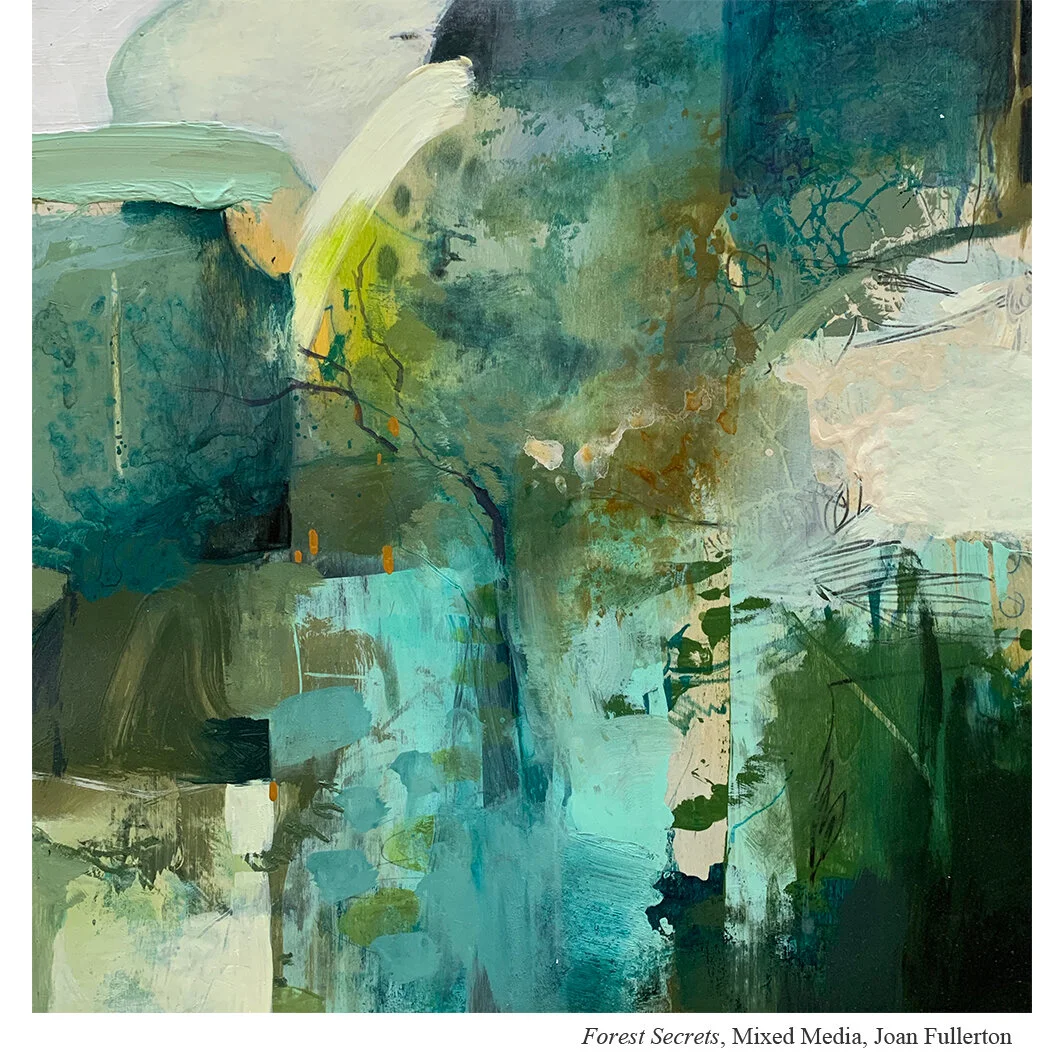No Accidents: How One Artist Embraces the Unexpected
One day artist Joan Fullerton found herself sitting on the sidewalk, surrounded by people and a painting. She had said yes to one of those art events where artists paint live and then auction off their work at the end of the event.
Fullerton was working on a watercolor painting. She was a skilled painter. But even with an art school education, years teaching art full time at the local community college and a roster of art mentors that would make any watercolorist drool, well intended people kept talking to her and it was incredibly distracting.
And that distraction lead her to keep grabbing the non watercolor materials she’d also brought with her. She began building layers- adding pastel and pencil and acrylic paint- between peoples’ questions and comments.
The painting sold for top dollar but it was the way of working that really caught Fullerton’s attention.
This accidental discovery is perfect Fullerton.
“Everything I do that really takes me down a new path started from a so-called accident,” she says.
It’s a principle that guides the artist’s work and life.
HER WORK
Fullerton works in mixed media with acrylics as her predominant paint. (She is a Golden working artist.) She loves layering.
“I love to see one image through another image. I love ambiguity. I love a story that’s not all that straightforward.”
For work that feels so free, Fullerton starts with constraints. And there’s a reason.
“I am a big believer in restraints, constrictions and limitations,” she says. “When you give yourself an assignment that really constrains your opportunities...then you become creative.”
She starts by making a definite choice on color and takes something that’s nearby. Maybe black and white. Maybe a neutral buff. And with that she begins painting and making preliminary abstract marks. She works intuitively laying something down, reacting to it, putting the next thing down.
This first part all takes about 30-40 minutes no matter the size.
Fullerton then takes a break. She puts all of her paintings (and she likes to work on several at a time) up vertically on her wall.
“I turn them in every direction, 360 all the way around. And I contemplate. I just sit back and look at them and I might get an idea.”
Sometimes a piece will say it’s finished. Other times she’ll start asking questions about what it could be and how’d she get there in paint.
“I will start to see, oh this really feels like it wants to be a landscape. Or I’m some botanical images will emerge or wow, there’s a figure in there.”
Sometimes she’ll follow that idea or other times, if nothing strikes, she’ll keep going to see if something appears or makes itself known.
“A lot of times, I don’t know right away.”
LOVE OF PROCESS
Sitting on that corner, covering a watercolor painting with mixed media, Fullerton didn’t quite yet know how important this way of working would become to her. Not just in her art but to her life. It connects her to something bigger. A realization that took full form after Fullerton recently lost both her parents.
“Having gone through a difficult time in my life, this has become really apparent to me. It’s when I’m involved in the process of marking art, it’s all encompassing,” she says. “You just disappear into the process. You forget if you have heart ache or if you have physical paint. The process is what connects me to the universe...It’s much bigger than just me and my momentary concerns.”
That connecting to something bigger resonates through Fullerton. There is an aw and respect she gives to the process of being a creative person and creating paintings.
“All of this is a mindset that is valuable,” says Fullerton. “But it takes practice. It takes a bit of reminding yourself.”
It’s a practice she sets up in her workshops. She’s developed a sequence of prompts that she gives students one at a time, right after each other. The idea is that they won’t have time to question their decisions. They just have to keep going because the next prompt is coming.
“There is not time of letting your critic get in there and say, ‘Oh well, that looks really stupid,’ or ‘That’s never going to sell,’” says Fullerton.
And that’s important to Fullerton. She knows that negative words shut down a person’s possibilities.
When Fullerton paints, either in her studio or with her students, she draws an imaginary line around the space and she images her ego going outside of that space.
“I remind myself,” she says, “that I’m willing to fail...I am there to let go, really to just let go and let something come through me. And then respect whatever it is I get.”
Listen to Joan Fullerton’s podcast interview episode, Monday January 13th. Don’t miss a single episode. Add your name to the weekly newsletter below to get notified when new episodes go live.




